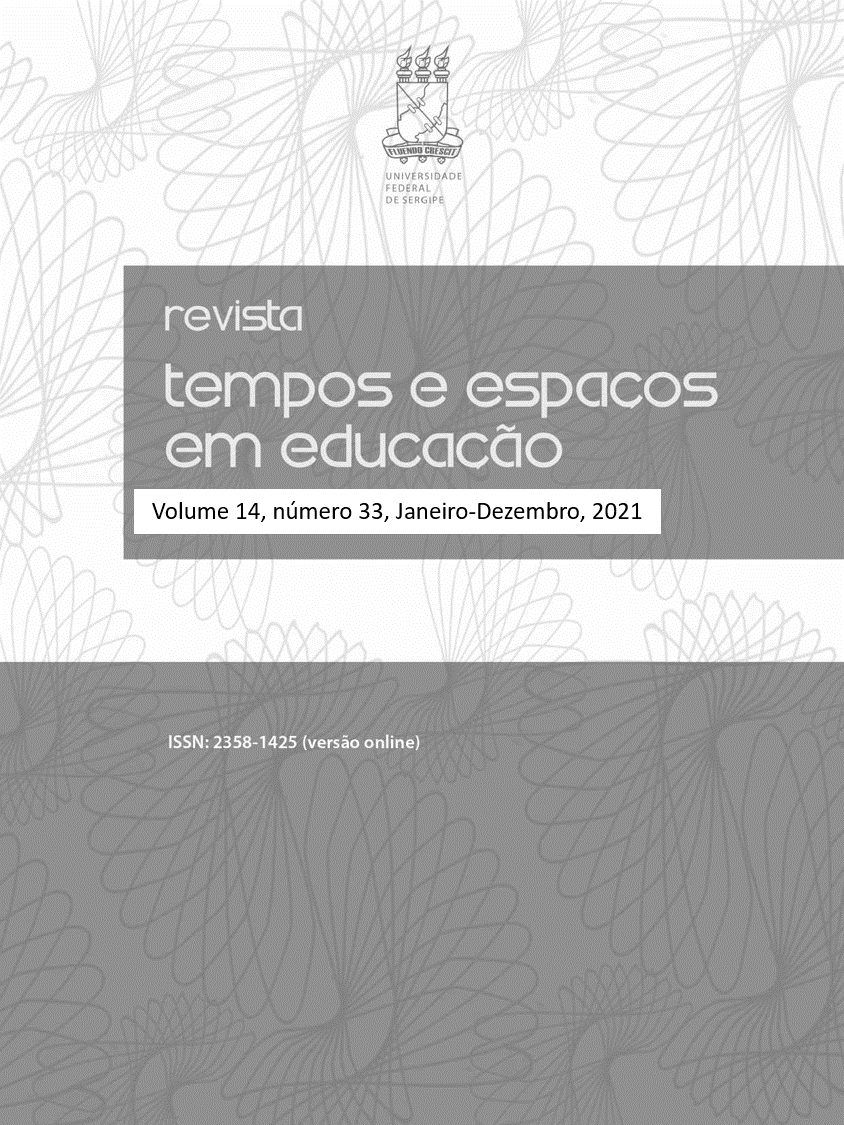Análise da Avaliação EMI no Ensino Superior
DOI:
https://doi.org/10.20952/revtee.v14i33.15475Palavras-chave:
Avaliação, English as a Medium of Instruction (EMI), Ensino superior, Treinamento de professoresResumo
Este artigo de pesquisa revela as práticas atuais de avaliação de professores English as a Medium of Instruction (EMI) em uma universidade privada de médio porte (ou seja, 12.000 estudantes) em Madri, Espanha. A pesquisa visa analisar como é feita a avaliação EMI; quais são as ferramentas de avaliação mais utilizadas pelos professores EMI; e o papel do inglês como língua estrangeira no ensino EMI. Além disso, esta é uma pesquisa de abordagem mista onde os dados foram obtidos através de duas ferramentas: um questionário (Otto, 2018) e dois grupos de foco. Em resumo, o estudo verifica claramente que os professores de IME não são suficientemente treinados em termos de ensino de IME em geral, e de avaliação de IME, em particular. Não há diferenças significativas entre as ferramentas de avaliação EMI e não EMI, além do fato de que a avaliação sumativa prevalece sobre a avaliação formativa. Após a coleta de provas empíricas, é apresentado um conjunto final de recomendações sobre as práticas de avaliação do IME.
Downloads
Referências
Alderson, J. C. (2004). Foreword. In L. Cheng, Y. Watanabe & A. Curtis (Eds.), Washback in language testing: Research contexts and methods. London: Lawrence Erlbaum.
Alderson, J. C., & Wall, D. (1996). Editorial in language testing, 13(3), 239-240.
Alderson, I. C., & Wall, D. (1993). Does washback exist? Applied Linguistics, 14, 115-129.
Andrews, S. (2007). Teacher language awareness. Cambridge, UK: Cambridge University Press.
Bailey. K. M. (1996). Working for washback: A review of the washback concept in language testing. In Language Testing, 13(3), 257-279.
Ball, P. Kelly, K., & Clegg, J. (2015). Putting CLIL into practice. Oxford: Oxford University Press.
Black, P. & William, D. (1998). Assessment and classroom learning. In Assessment in education: Principles, policy & practice, 5(1), 7-74.
Chapelle, C. A. & Douglas, D. (1993). Foundations and directions for a new decade of language testing. In D. Douglas & C. Chapelle (Eds.), A new decade of language testing research (pp. 1-22). Arlington, VA: TESOL Publications.
Cheng, L. (1997). How does washback influence teaching? Implications for Hong Kong. In Language and Education, 11(1), 8-54.
Cheng, L., Watanabe, Y. & Curtis, A. (Eds.). (2004). Washback in language testing: Research contexts and methods. Mahwah, NJ, US: Lawrence Erlbaum Associates Publishers.
Coyle, D., Hood, P., & Marsh, D. (2010). Content and language integrated learning. Cambridge, UK: Cambridge University Press.
Dafouz, E. (2011). English as the medium of instruction in Spanish contexts. In Y. Ruiz de Zarobe, J. M. Sierra, & F. Gallardo del Puerto (Eds.), Content and language integrated learning. Contributions to multilingualism in European contexts. Berlin: Peter Lang, 189-209.
Halbach, A., Lázaro, A., & Guerra, J. (2013). La lengua inglesa en la nueva universidad española del EEES. In Revista de Educación, 362, 105-132.
Hellekjær, G. (2005). The acid test: Does upper Secondary EFL instruction effectively prepare Norwegian students for the reading of English textbooks at colleges and universities. University of Oslo, Oslo.
Johnson, R., Onwuegbuzie, A., & Turner, L. (2007). Toward a definition of mixed method research. In Journal of Mixed Method Research, 1(2), 112-133.
Kirkpatrick, A. (2014). The language(s) of HE: EMI and/or ELF and/or multilingualism?’ The Asian Journal of Applied Linguistics, 1(1), 4-15.
Klaasen, R. & Räsänen, A. (2006). Assessment and staff development in higher education for English-medium instruction: A question-raising article. In R. Wilkinson & V. Zegers (Eds.), Bridging the assessment gap in English medium higher education (pp. 235-255). Fremdsprachen in Lehre und Forschung 40. Bochum, Germany: AKS Verlag.
Macaro, E., Curle, S., Pun, J., An, J., & Dearden, J. (2018). A systematic review of English medium instruction in higher education’. In Language Teaching, 51(1), 36-76.
Otto. A. (2018). Assessment in CLIL: The balance between the content and the language. Madrid bilingual secondary schools as a case study. Unpublished PHD thesis, Alcalá University, Spain.
Pavón, V. (2018). La controversia de la educación bilingüe en España. In Tribuna Norteamericana, 26, 21-27.
Shohamy, E. (1993). The power of tests: The impact of language tests on teaching and learning. Washington, D.C.: The National Foreign Language Center at John Hopkins University.
Weir, C. (1990). Communicative language testing. New York: Prentice Hall.
Wilkinson, R. & Zegers, V. (Eds.). (2006). Bridging the assessment gap in English medium higher education’. Fremdsprachen in Lehre und Forschung 40. Bochum, Germany: AKS Verlag.
Wilkinson, R. (2013). English-medium instruction at a Dutch university: Challenges and pitfalls. In A. Doiz, D. Lasagabaster, & J. M. Sierra (Eds.), English-medium instruction at universities: Global challenges (pp. 3-24). Bristol: Multilingual Matters.
Downloads
Publicado
Como Citar
Edição
Seção
Licença
À Revista Tempos e Espaços em Educação ficam reservados os direitos autorais pertinentes a todos os artigos nela publicados. A Revista Tempos e Espaços em Educação utiliza a licença https://creativecommons.org/licenses/by/4.0/ (CC BY), que permite o compartilhamento do artigo com o reconhecimento da autoria.



